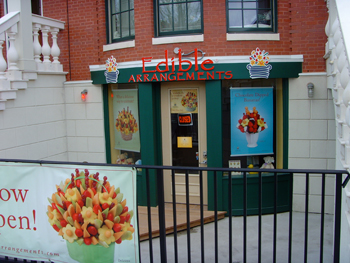 Many commercial district managers work closely with their landlords and property owners to help fill vacancies along their commercial corridors. This challenge is made even more difficult as many retail sectors have been forced to retreat from previous expansion plans. The pickings remain slim for many district managers looking to fill vacancies. However, there are bright spots on the horizon. One sector that is expected to grow by almost 20 million square feet in 2009 is the franchise sector. Why is that? Experts believe that the current economic climate will only speed up the number of individuals interested in entrepreneurship and self-employment. This trend will help ensure a steady supply of entrepreneurs willing to take the franchise plunge. It also means opportunities for many commercial districts looking to balance their retail mix and fill critical vacancies.
Many commercial district managers work closely with their landlords and property owners to help fill vacancies along their commercial corridors. This challenge is made even more difficult as many retail sectors have been forced to retreat from previous expansion plans. The pickings remain slim for many district managers looking to fill vacancies. However, there are bright spots on the horizon. One sector that is expected to grow by almost 20 million square feet in 2009 is the franchise sector. Why is that? Experts believe that the current economic climate will only speed up the number of individuals interested in entrepreneurship and self-employment. This trend will help ensure a steady supply of entrepreneurs willing to take the franchise plunge. It also means opportunities for many commercial districts looking to balance their retail mix and fill critical vacancies.So, what is a franchise and how does it differ from a chain?
A franchise establishment is a store owned by an individual businesses owner(s) (also called a 'franchisee' or 'operator') who enters into a contractual relationship with a 'franchisor' who grants the right to distribute a uniform set of products, techniques, and trademarks in exchange for a portion of gross monthly sales and/or a royalty fee. A chain store, on the other hand, is a group of stores under the same management and ownship. Some of the most well know examples of franchise establishments are McDonald's, SuperCuts, Subway and GNC (General Nutrition Centers). Do these stores sound familiar? That's because franchise establishments are more likely than chain stores to locate on traditional neighborhood commercial corridors. But buying into a franchise is not cheap. According to Entrepreneur magazine, purchasing a franchise establishments can cost an entrepreneur anywhere from $61,000 (Subway) to $1.7 million (Kentucky Fried Chicken).
Why have so many franchise establishments found homes on traditional commercial corridors?
There is one significant difference between a chain and a franchise that has made franchise establishments more common along traditional commercial corridors. Unlike a chain that is able to gaurantee rent payment to a landlord by leveraging a strong track record and good credit, a franchisee who signs a lease and is typically the one and only person obligated to pay it. There is no corporate gaurantee from the franchisor at the end of the day. This is why, when times were good, many mall owners often steered clear of franchise establishments whenever possible. On the other hand, commercial district landlords were often making a choice between a franchisee or an independent entrepreneur - and in that race, the franchisee often looked likethe better tenant. This heirarchy of retail created stronger opportunities for entrepreneurs along traditional commercial corridors.
How do you find franchise establishments for your district?
Finding a franchise for your district can be a bit more complicated than than reaching out to a chain store. That is because a franchisor needs an entrepreneur to expand, which means that you first need to find the entrepreneur interested in opening a franchise. One suggestion is to thoroughly map the retail and food franchisers in your region - particularly those whose business models work on traditional neighborhood corridors. Then you need to take the time to identify the development directors of each of these companies. These individuals will be in contract with potential entrepreneurs and may help them identify locations for the franchise establishment. A local broker or commercial leasing agent can sometimes help with this process as well.
Image: Edible Arrangements, a franchise growing along a number of traditional commercial corridors, particularly in the New York area.

No comments:
Post a Comment